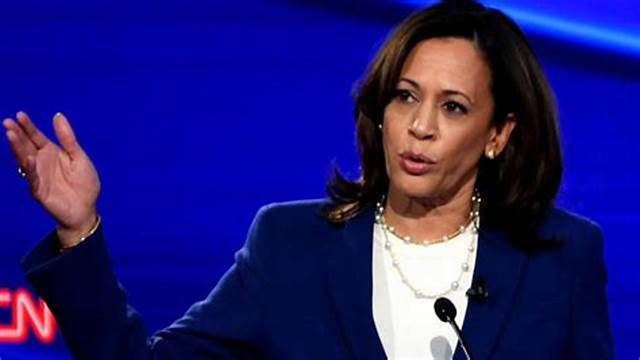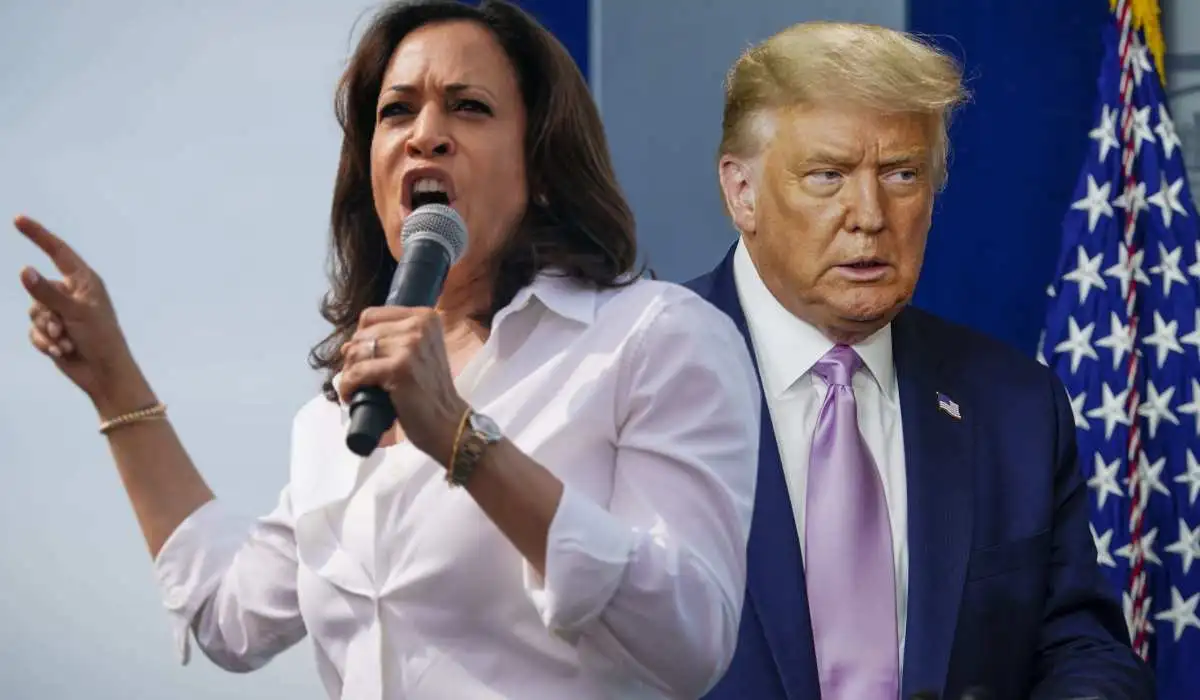As the 2024 U.S. elections approach, the political arena is heating up, drawing the nation’s attention to two pivotal figures: former President Donald Trump and current Vice President Kamala Harris. Their contrasting visions for America not only shape their campaigns but also reflect deeper societal divides. This article delves into the backgrounds, campaign strategies, key issues, and potential impacts of their candidacies.
Backgrounds of the Candidates
Donald Trump

Donald Trump’s political journey began with his election as the 45th president in 2016, where he capitalized on widespread discontent with the political establishment. His presidency was marked by controversial policies, including tax cuts, immigration restrictions, and trade wars. Trump’s strong base is driven by his populist rhetoric, portraying himself as a champion of the working class against elite interests. Despite losing the 2020 election to Joe Biden, he remains a formidable force within the Republican Party, leveraging his media presence and loyal following.
Kamala Harris

Kamala Harris made history as the first woman of South Asian and African American descent to serve as Vice President. A former attorney general of California and U.S. senator, Harris has positioned herself as a progressive leader focused on issues such as social justice, healthcare reform, and climate change. Her background in law and advocacy equips her to address systemic inequalities, resonating particularly with younger and marginalized voters.
Campaign Strategies

Trump’s Approach
Trump’s campaign strategy revolves around a combination of grassroots mobilization and media engagement. He hosts large rallies that energize his base and create a sense of community among supporters. His messaging emphasizes a return to “America First” policies, focusing on economic recovery, immigration control, and law and order. Trump frequently uses social media to communicate directly with his followers, often framing the election as a battle against a corrupt political establishment.
Harris’s Strategy
In contrast, Kamala Harris’s campaign focuses on inclusivity and coalition-building. Her strategy involves extensive outreach to diverse communities, emphasizing issues that resonate with various demographics. Harris aims to mobilize young voters and women, leveraging her role in the Biden administration to showcase achievements like the Inflation Reduction Act and pandemic recovery efforts. She also utilizes digital platforms to engage with voters, encouraging grassroots activism and participation.
Key Issues
- Economy
- Trump: Advocates for tax cuts, deregulation, and energy independence, arguing that these policies will stimulate job growth and increase economic resilience.
- Harris: Promotes a mixed economic approach that includes investing in green jobs, infrastructure, and healthcare, aiming for sustainable growth and equity.
- Healthcare
- Trump: Aims to dismantle the Affordable Care Act and replace it with a system that emphasizes market-driven solutions.
- Harris: Supports expanding healthcare access through a public option, advocating for policies that aim to lower costs and improve access for all Americans.
- Climate Change
- Trump: Generally downplays climate change initiatives, focusing instead on energy production from fossil fuels.
- Harris: Positions climate change as a critical issue, advocating for ambitious policies to transition to renewable energy and reduce carbon emissions.
- Social Justice
- Trump: Emphasizes a “law and order” approach, advocating for strong policing measures and portraying his administration as tough on crime.
- Harris: Champions criminal justice reform and systemic change, calling for policies that address racial inequality and police accountability.
- Foreign Policy
- Trump: Advocates for a more isolationist stance, emphasizing bilateral trade deals and a reduction in foreign entanglements.
- Harris: Supports re-engagement with international allies and multilateral agreements, emphasizing diplomacy and global cooperation on issues like climate change and security.
Voter Mobilization Efforts
Both candidates recognize the importance of mobilizing their bases. Trump’s rallies have become a hallmark of his campaign, creating a sense of urgency and excitement among supporters. His narrative often frames the election as a fight for the soul of America, urging his followers to take action.
Harris’s approach is more grassroots-oriented. She engages with local organizations and communities, aiming to inspire participation through empathy and connection. Her campaign emphasizes the importance of voting as a civic duty, particularly among historically marginalized groups.
Potential Impacts
The 2024 elections will have significant implications for the future of the United States. A Trump victory could signal a return to more nationalist and populist policies, potentially deepening political divisions. Conversely, a Harris win could solidify a progressive agenda and strengthen efforts toward social equity and climate action.
Both candidates face challenges: Trump must navigate his ongoing legal issues while unifying a divided Republican Party, whereas Harris must balance her progressive ideals with the centrist tendencies of some Democratic voters. The outcomes will hinge on voter turnout, particularly among young people and minority groups, who could play a decisive role in shaping the election.
Conclusion

As the 2024 elections loom, the clash between Donald Trump and Kamala Harris represents a pivotal moment in American politics. Their differing visions and strategies will not only influence the outcome of the presidency but also reflect broader societal trends and concerns. Voter engagement, fueled by the candidates’ campaigns, will be crucial in determining the direction of the country for years to come. The coming months will undoubtedly bring intense debates, fervent rallies, and critical decisions as Americans prepare to shape their future at the ballot box.


